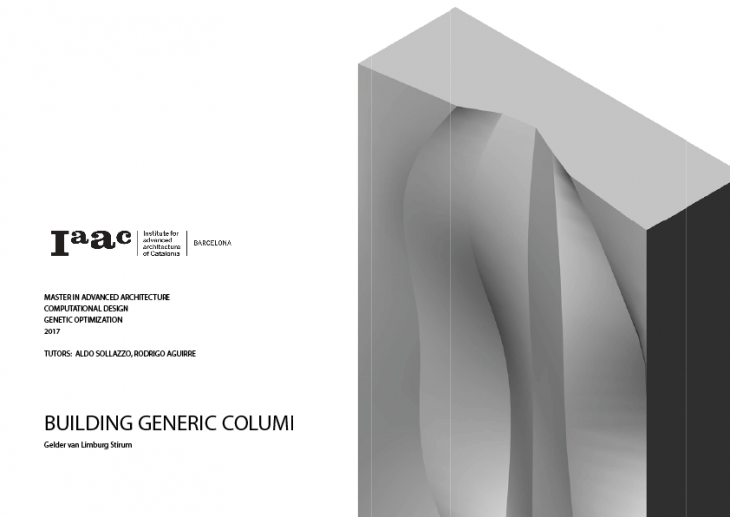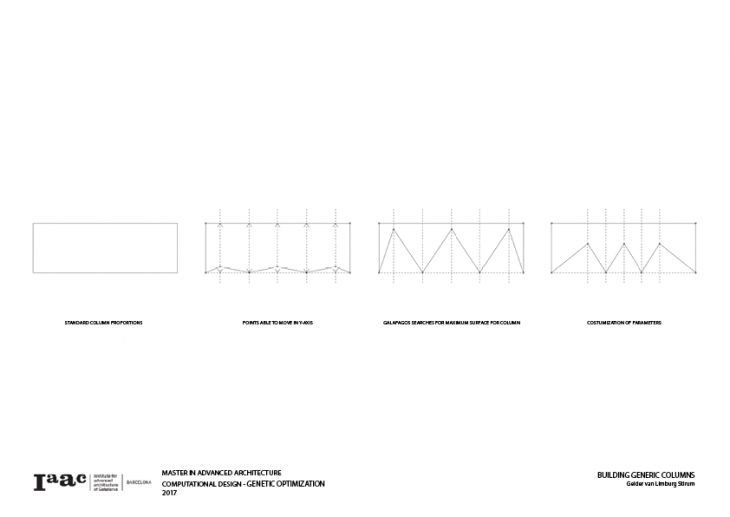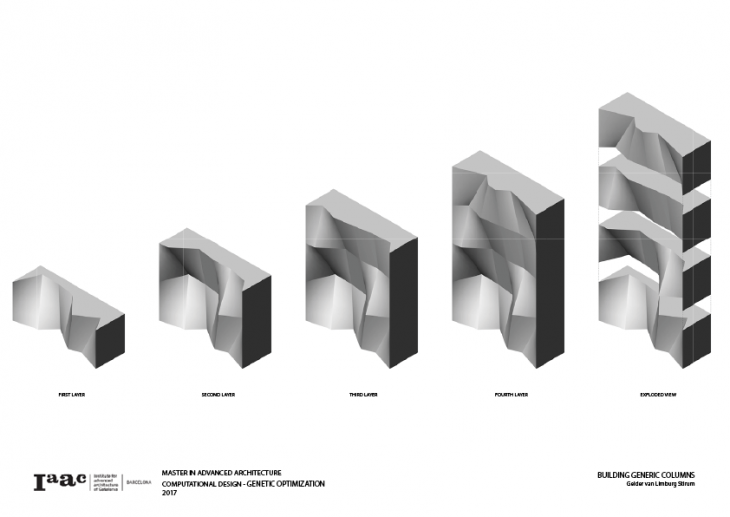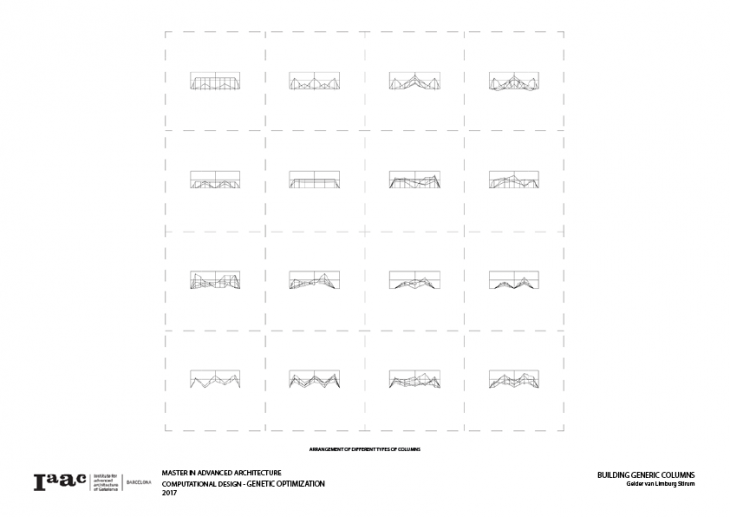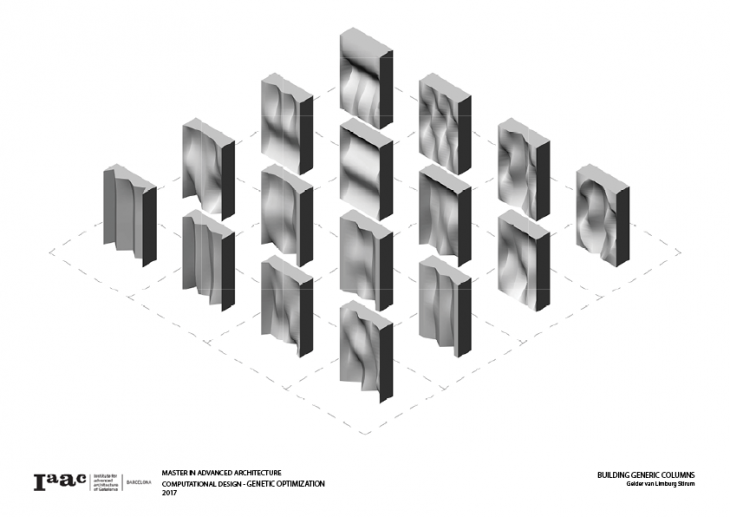Building Generic Columns
The brief for the Final Assignment for the Computational Design Course is to apply the knowledge gained from this seminar during the year and to link it to the work of the students’ research studios. This assignment is related to columns made out of a composition of graphene and clay, as it is part of the Digital Matter Intelligent Construction Studio. To optimize the morphology of these specific columns different kinds of plugins are used with emphasis on Galapagos.
When using Galapagos it is very important to have clear what you are asking the tool to solve. In this case it is to search for the optimization of the material. In order to build up the shape of the column, it is divided into different slices. These slices work as sections and each one of them can be paramatrized with the Grasshopper coding. The goal of the solver is to look for the maximum distance between two points. A line between these two points is then divided into different segments. In each segment the GenePool allows points to move along the Y-axis. Depending on what constraints there are parameters can be adjusted to specific situations.
As an example; a composite column from clay-graphene that radiates heat to it’s surroundings, the bigger the surface the better. The columns are divided into several slices to control the performance of the column. For instance, in a room the heat circulation can be controlled in such a way that the bottom slices have more surface than the top ones since hot air goes to the upper part and cold air to the lower part of a room. Even the direction of the heat can be regulated.
Each space asks for different solutions, therefore the columns can be tailor-made. The columns can be optimized and customized to spaces with place specific requirements and constraints. With the GenePool Controller and other parameters these drivers can be managed and the solver can run it’s solution.
‘Building Generic Columns’ is a project of IaaC, Institute for Advanced Architecture of Catalonia developed at the Computational Design Seminar in the Master in Advanced Architecture by:
Student: Gelder van Limburg Stirum
Faculty: Aldo Sollazzo & Rodrigo Aguirre
